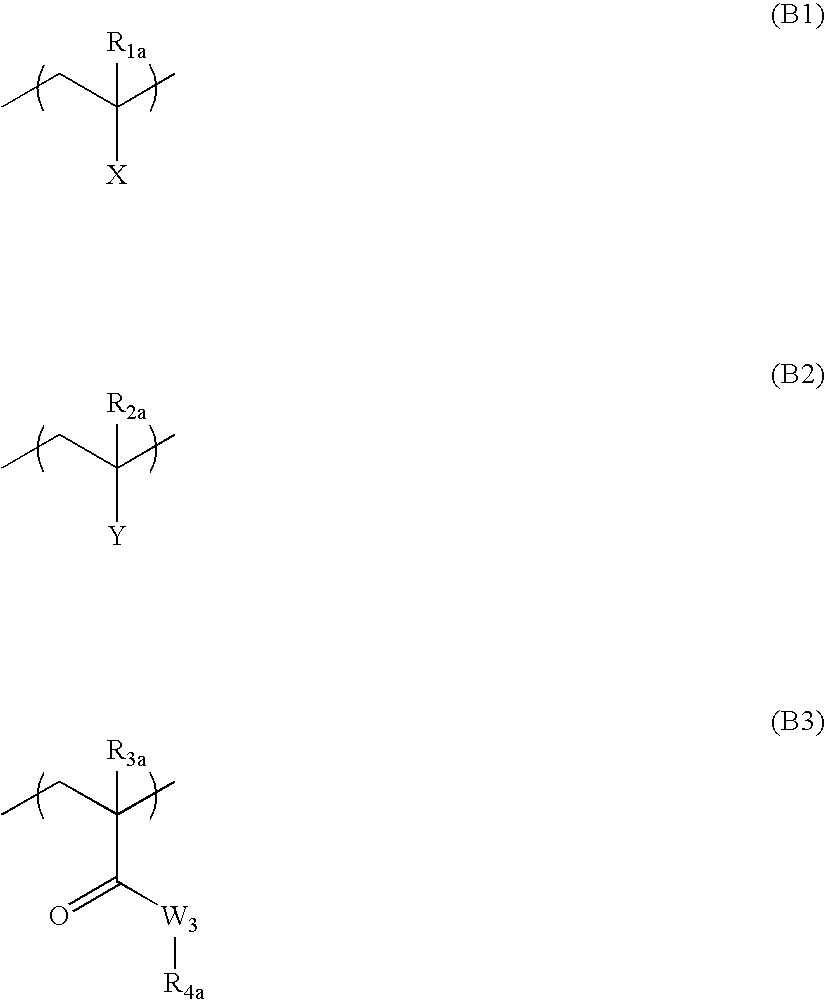Photosensitive lithographic printing plate
a lithographic printing plate and photosensitive technology, applied in the direction of photosensitive materials, auxiliaries/base layers of photosensitive materials, instruments, etc., can solve the problems of large variation of halftone dot area in the printing plate, insufficient polymerization region at the edge of the image, and decrease in resolution, so as to achieve excellent light stability
- Summary
- Abstract
- Description
- Claims
- Application Information
AI Technical Summary
Benefits of technology
Problems solved by technology
Method used
Image
Examples
examples
[0151] The present invention will be described in more detail with reference to the following examples, but the invention should not be construed as being limited thereto.
examples 1 to 5
[Example of Support 1]
(Support 1: Anodized Aluminum Support)
[0152] A 0.30-mm thick aluminum plate of 1S material was grained at the surface thereof using a No. 8 nylon brush and an aqueous suspension containing 800-mesh pumice stone, and then thoroughly washed with water. The plate was immersed in a 10% aqueous solution of sodium hydroxide at 70° C. for 60 seconds to etch, followed by washing with running water, neutralizing with 20% HNO3, and then washing with water. The plate was then subjected to the electrolytic surface roughening treatment in a 1% nitric acid aqueous solution under the condition of VA=12.7 V at an anodic time electricity of 300 Coulomb / dm2 using a current having an alternating sine wave form. The surface roughness was measured and found to be 0.45 μm (in terms of Ra). Subsequently, the plate was immersed in a 30% H2SO4 aqueous solution to desmut at 55° C. for 2 minutes. Then, the plate was anodized in a 20% H2SO4 aqueous solution of 33° C. at an electric cur...
PUM
| Property | Measurement | Unit |
|---|---|---|
| wavelength range | aaaaa | aaaaa |
| weight ratio | aaaaa | aaaaa |
| weight ratio | aaaaa | aaaaa |
Abstract
Description
Claims
Application Information
 Login to View More
Login to View More - R&D
- Intellectual Property
- Life Sciences
- Materials
- Tech Scout
- Unparalleled Data Quality
- Higher Quality Content
- 60% Fewer Hallucinations
Browse by: Latest US Patents, China's latest patents, Technical Efficacy Thesaurus, Application Domain, Technology Topic, Popular Technical Reports.
© 2025 PatSnap. All rights reserved.Legal|Privacy policy|Modern Slavery Act Transparency Statement|Sitemap|About US| Contact US: help@patsnap.com



